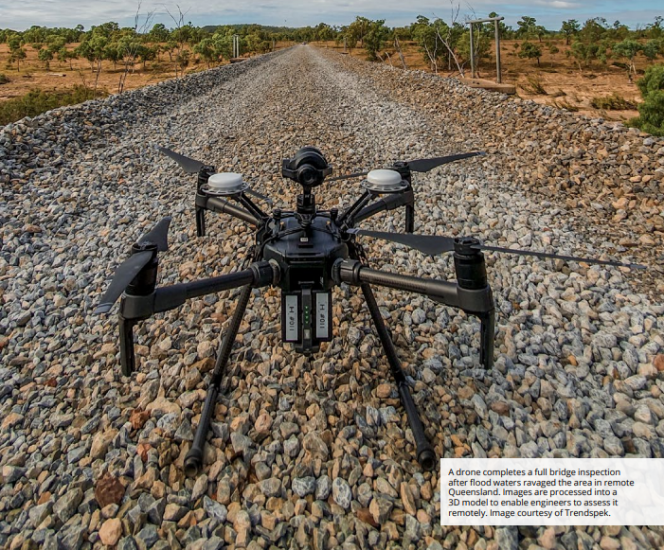Australia’s Department of Infrastructure, Transport, Regional Development and Communities has published a National Emerging Aviation Technologies (NEAT) policy statement, intended to enable adoption of new and emerging digital aviation technology. It aims to strengthen Australia’s leadership in innovation and adoption of emerging technology and enable industry to make informed decisions regarding investment, developing technology and commencing operations in Australia.
The policy statement outlines the department’s approach for progressing a range of coordinated initiatives on rules and enforcement, infrastructure development, legislative change programs and utilisation of technology to support the development of novel service delivery approaches that will underpin the evolving operations. This aims to ensure Australian business and communities can readily adopt and integrate drone and AAM operations in an appropriate manner.
The policy statement anticipates initiatives and trials with a focus on operational readiness to support the commencement of viable commercial services. The Australian Government believes this approach will support the development of a strong and vibrant Australian-based emerging aviation technology sector, support the development of associated industries, and will strengthen Australia as a highly competitive destination for early and ongoing investment in these technologies.
Key initiatives
The Australian Government will develop foundational capabilities and processes to form an operational ecosystem that is scalable, efficient and adaptable as the emerging aviation technology sector evolves. The Department of Infrastructure, Transport, Regional Development and Communications (DITRDC) in collaboration with state, territory and local governments and relevant Commonwealth agencies and authorities will develop:
- A Drone Rule Management System (DRMS) to coordinate and manage operating rules for drones from different agencies across Commonwealth, state, territory and local governments. This will include operating boundaries or rules related to security, noise, privacy, environmental impacts and cultural sites.
- Coordinated enforcement schemes to enable state and territory law enforcement authorities to manage minor breaches of rules and regulations related to drone operations.
- A National Drone Detection Network (NDDN) consisting of scalable and modular infrastructure to facilitate the detection of drones to protect assets, activities and events in the air and on the ground. The system will consist of a modular and scalable network of drone detection sensors, linked to a central database, which can filter and provide appropriate data to a wide range of users.
- A NEAT infrastructure planning framework consisting of clear principles and processes to ensure effective and efficient coordination of planning decisions related to construction and operation of electric vertical take-off and landing vehicles (eVTOL) and drone take-off, delivery and landing sites.
Unmanned Aircraft System Traffic Management
Australia will take an iterative approach to developing Australia’s Unmanned Aircraft System Traffic Management (UTM) system. UTM will support the management of a range of risks and impacts associated with emerging aviation technologies, including safety, security, noise, privacy and environmental issues.
- DITRDC will prepare an Action Plan for the development, deployment and management of UTM informed by advice and input from industry, the Civil Aviation Safety Authority (CASA), Airservices Australia (Airservices), Defence and other relevant government agencies and regulators.
- Airservices will develop and manage a Flight Information Management System (FIMS) to underpin the UTM ecosystem and serve as an interface with the broader Air Traffic Management (ATM) system to ensure effective management and safety of Australian airspace. FIMS will support a mix of centralised government services and delegated service delivery by industry providers operating in an open and competitive market.
Regulatory modernisation
The Australian Government will undertake regulatory development and reform aimed at ensuring that approaches to managing risks and impacts associated with emerging aviation technologies are outcome focused, risk based and proportionate.
- CASA will prepare an aviation safety regulatory road map in 2021 in consultation with industry for the future development of safety regulation of drones and AAM.
- The Australian Government will develop an approach for the integration and wider incorporation of emerging aviation technologies into Australia’s airspace system as an element of a broader strategy to modernise Australia’s approach to airspace design and management. CASA will prepare an implementation plan for Australia’s Future Airspace Framework in 2021–22 to give effect to the Australian Government’s airspace policy.
- DITRDC will work with state, territory and local governments to develop an outcomes-based noise framework for emerging aviation technologies utilising UTM.
- The Australian Government will continue to adopt a technology-neutral approach to legislation and regulations to manage privacy concerns. DITRDC will work with Commonwealth, state and territory government agencies to provide clear, practical guidance on how operators can meet their obligations under relevant privacy legislation and minimise the privacy impacts of their operations.
- The Australian Government will review and amend legislation to enable the effective implementation of security measures, including cyber security requirements, infrastructure security requirements and improved management of counter-drone capability approvals.
Industry support
The Australian Government will support the adoption of emerging aviation technologies in partnership with industry:
- The Australian Government will establish the Emerging Aviation Technology Partnership (EATP) program to support local manufacturing and the commencement of new operations that address priority community needs to enter into commercial service. DITRDC will manage the EATP program, with support from other government regulators and service providers.
- DITRDC will prepare best-practice guidance material to promote the consideration of emerging aviation technologies within government procurement processes. DITRDC will work with Commonwealth, state, territory and local government agencies to encourage adoption of these guidelines.
- DITRDC will develop a web-based portal to serve as a coordinated source of information regarding regulatory process, procedures, government support programs and other relevant information to support operational and investment decisions by the commercial drone and AAM industry.
For more information visit:




